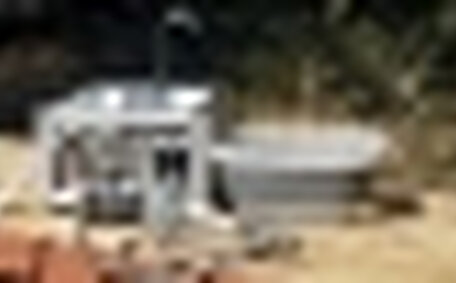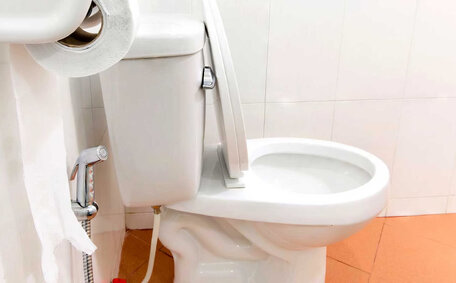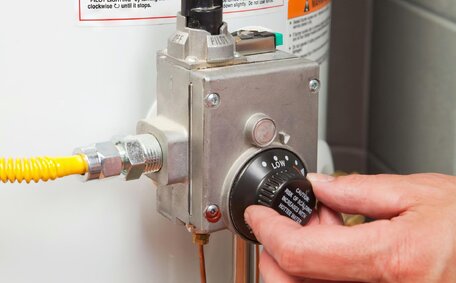Why You Should Flush Your Hot Water System
Regular flushing of your electric water heater is crucial for optimal temperature pressure relief and to enhance both efficiency and longevity. Over time, sediment and mineral deposits from hard water accumulate inside your tank. Flushing eliminates this sediment, enhancing heating efficiency.
Sediment buildup acts as an insulator, distancing water from the heating elements, thus diminishing heat transfer and forcing your water heater to work harder.
Flushing also prevents potential leaks caused by sediment buildup around fittings and pipes. Learning to maintain your hot water system effectively reduces the risk of corrosion and crack development. Even minor leaks can lead to significant heated water loss over time, adversely affecting the energy efficiency and spiking your utility costs; a condition often protected against with a sacrificial anode.
In Colyton, Sydney, where hard water is prevalent, too much mineral content necessitates regular maintenance for your water heater. High mineral content can speed up the accumulation of sediment in your heater.
Industry experts suggest an annual flush of your hot water system, with more frequent maintenance in hard water areas.
Carrying out this preventative maintenance is very important and only takes about an hour.
Taking the DIY route and flushing water heaters with a garden hose can do wonders for your wallet by sidestepping plumber fees. You’ll recoup the time investment through increased efficiency and fewer repairs down the road. Maintain your hot water system’s peak performance and lifespan with regular flushing.
How Often to Flush a Hot Water System
Flush your hot water system at least every six months, especially in hard water areas.
Hard water contains high levels of minerals like calcium and magnesium. Over time, these minerals pile up as sediment within the storage tank.
Inspect your plumbing fixtures for mineral deposits or scaling, a common sign of hard water. You may also notice soap scum is difficult to rinse away. If your fixtures show these signs, consider cleaning your hot water system every 4-6 months.
Flushing every 4-6 months combats sediment build-up, preventing efficiency losses and pressure relief valve issues. It extends your hot water system’s lifespan by preventing corrosion and overworking of the unit. Annual flushing is the baseline recommendation, but in hard water regions like Colyton, twice yearly flushing is ideal.
Pressure fluctuations, unusual noises, and diminished hot water supply signal potential pressure relief valve issues or the need for a system flush. Our skilled Colyton technicians are on hand to evaluate your hot water systems and pinpoint the best times for flushing.
Signs Your Hot Water System Needs Flushing
There are several signs that indicate your hot water system needs flushing to remove built-up sediment:
Reduced water pressure
If you notice the water pressure from your hot water taps has decreased, this is a symptom of sediment accumulation inside the tank and pipes. As buildup continues, it hinders the continuous flow hot water should have.
Strange noises
Listen for rumbling, banging or churning noises from your tank as indicators that it’s time to flush your system. This indicates sediment and minerals are loosening and moving around inside the tank - a clear sign a flush is needed.
Discoloured water
If the flow appears rusty, brownish, or dirty, it suggests any sediment within the water heater is disturbing your hot water quality. Particles and minerals get stirred up with water coming out when water flows after sitting.
Inefficient heating
If it takes longer for your hot water to reach temperature or the water runs out sooner, sediment is likely insulating the tank. Flush the heater, then verify its proper function.
Persistent drips from taps even when fully closed suggest debris in the valves, necessitating a flush of the water heater. A flush can dislodge it to stop drips.
Schedule a flush when you notice these signs, or simply pick up the phone and call us for expert assistance. Our Colyton plumbers are happy to handle the job if you want to leave it to the experts.
Preparing to Flush Your Hot Water Tank
Flushing your gas water heaters is a straightforward DIY task, but some preparation is required for a safe and successful process:
Turn off power to the unit
For gas heaters, turn off the gas supply, extinguish the pilot light and set the control to 'off’ before maintenance.
Connect a garden hose
Connect a garden hose to the tank’s drain valve, situated near its base. Ensure the drain valve off position is reached from the water spigot allowing for unobstructed draining outdoors or into your chosen receptacle. Turn the drain valve to open it.
Turn off cold water supply
Locate the ball valve which is the cold water valve linked to your system and turn the cold water flow off. This cuts off water from entering during flushing.
Relieve pressure
Briefly open a hot water faucet inside the house to allow air in and relieve pressure in the tank. Turning off the cold water valve prior to draining enables water to flow freely out.
Flush until clear
Once everything is set up properly, connect your garden hose, you’ll need turn back the sediment flow and let clean water run through the hose until it’s clear. This may take 10 minutes or more. Following the water heater flush, then turn the cold water back on to refill and carry out a leak inspection.
With these simple preparation steps complete, you’re ready to manage the temperature pressure and flush sediment for peak hot water system performance.
Step-by-Step Guide to Flushing a Hot Water System
Follow these steps to thoroughly flush water heater sediment and minerals from your hot water system:
- Turn off the heater’s power by switching off the corresponding circuit breaker or setting the gas valve to "pilot" or "off."
- Connect a garden hose to the tank’s drain valve, situated near its base. Ensure the hose drain setup is configured so the end of the hose can drain freely outside.
- Close the cold water inlet valve to ensure the tank can properly drain without refilling.
- Open a hot water tap inside your home to relieve pressure in the tank.
- Open the drain valve and let water flow through the hose until it runs clear, indicating the removal of sediment.
- Optionally, perform a descaling flush with a vinegar solution to remove scale from your hot water tank, then refill with clean water.
- Once drained, close the drain valve and reopen the cold water supply valve.
- Turn the power or gas back on and allow water to refill the tank with fresh liquid.
- Inspect your connections for leaks as the tank refills to ensure you can see no evidence of escaping water. Tighten if needed.
It’s best to flush your water heater annually. In hard water areas like Colyton, or if you notice pressure drops or rumbling noises, flush every 4-6 months. Contact our team if you need help keeping your hot water system operating efficiently.
Flushing a Tankless Hot Water System
Flushing tankless water systems differs from the process used for traditional tank water heaters. Tankless heaters are engineered to deliver a continuous flow of hot water, eliminating the need for tank draining and refilling.
Follow these steps to flush sediment from a tankless system:
- Locate the water valve inlet and outlet pipes on the unit. Turn off the shutoff valves for both.
- Open hot water taps in the house to relieve pressure.
- Connect a garden hose to the inlet valve and place the other end in a bucket.
- Slowly open the inlet valve to flush out debris until water runs clear.
- Close inlet valve and disconnect hose.
- Re-open both inlet and outlet valves to normal positions.
- Inspect all connections for leaks as the system re-pressurises.
Tankless heaters should be flushed annually and their filters cleaned regularly to prevent sediment build-up. We’re happy to provide flushing and maintenance services for tankless systems here in Colyton.
After Flushing Your Hot Water System
After you’ve concluded flushing sediment and minerals from your hot water heaters, several final steps remain to wrap up the process:
Check for leaks
As the tank refills, meticulously examine all pipes, valves, and connections for potential leaks. Dripping or seepage means a seal or joint has been compromised and needs to be tightened or repaired.
Turn power back on
Once the tank is replenished, restore electricity or gas supply to reheat the water. For gas heaters, make sure you relight the pilot if needed.
Test and monitor
Run hot water taps to purge air from the lines. Test your system pressure and water temperature to ensure proper operation. Over the following days, keep an eye on your hot water service for any performance dips that might signal underlying issues.
Record the date of your hot water system flush to track when the next one is due. Scheduling a yearly reminder ensures you stay on top of this essential maintenance.
Timely flushing is crucial for maintaining your hot water system’s efficiency and longevity. Contact our team at Colyton Plumbing if you need assistance keeping your heater operating optimally.
Whenh3>Complex plumbing configurations
For complex systems with multiple tanks or intricate piping, it’s wise to enlist an expert for proper maintenance.
Major sediment buildup
If you can’t eliminate excessive debris, a professional should inspect components like the anode rod and manually clean the tank.
Signs of serious issues
If critical parts like the pressure relief valve or heating elements need replaced due to major leaks, loud banging, or complete loss of hot water during flushing, it likely indicates an underlying problem.
New system installation
When upgrading your old heater to a new one, hiring a licenced plumber ensures correct setup and compliance with safety regulations.
If DIY flushing proves challenging or you’re uncertain, our expert plumbers are ready to help.
At Colyton Plumbing, we specialise in hot water system maintenance and installation for Colyton homes. For assistance, reach out by phone at 1300 349 338 or email at [email protected].






